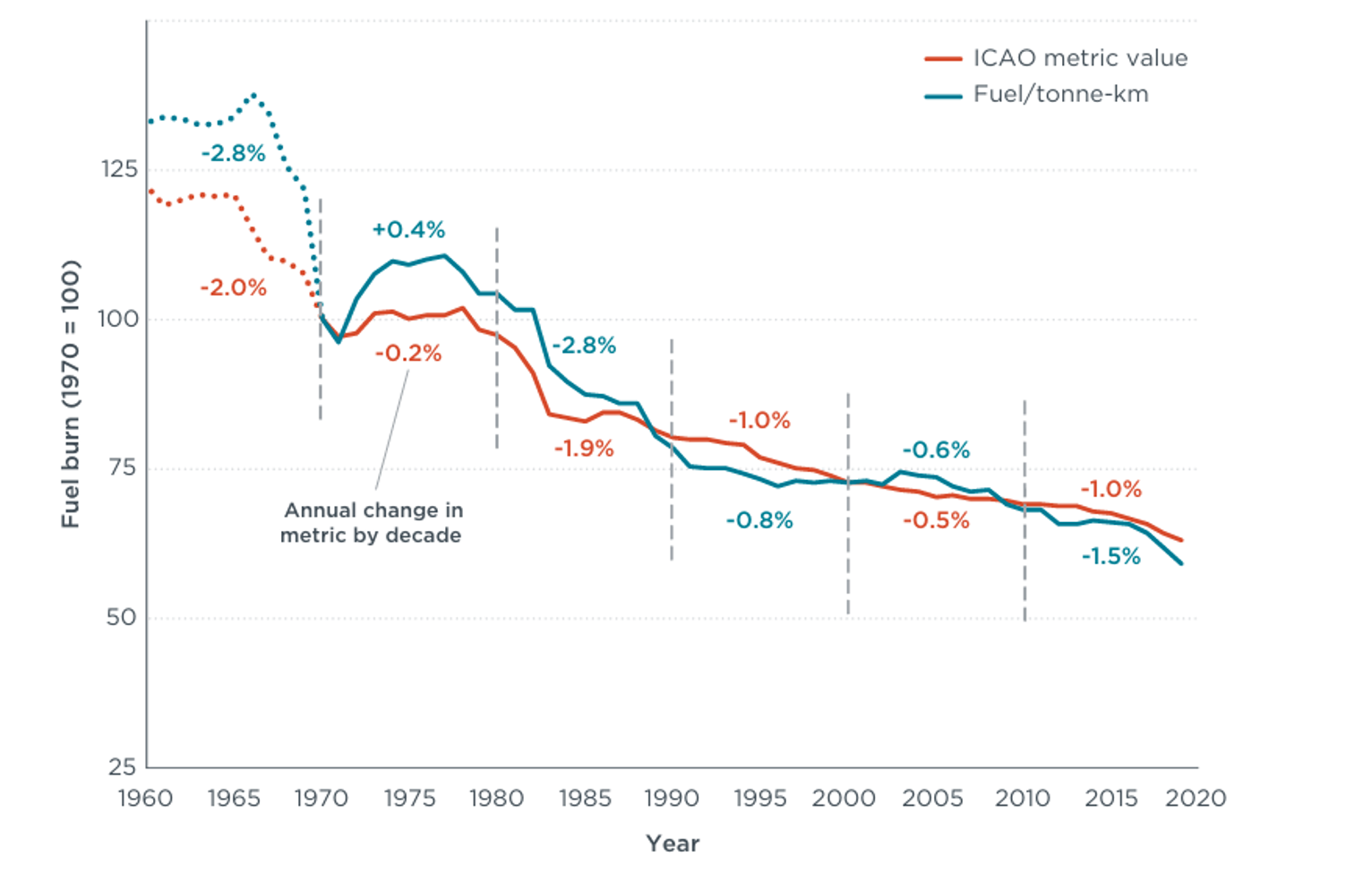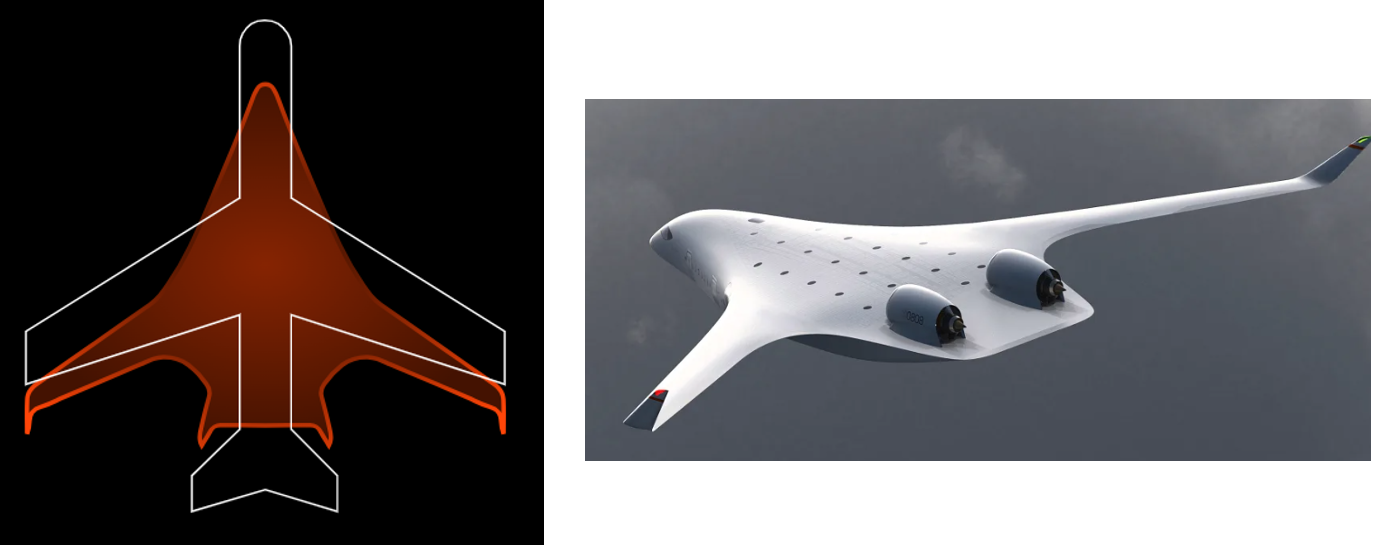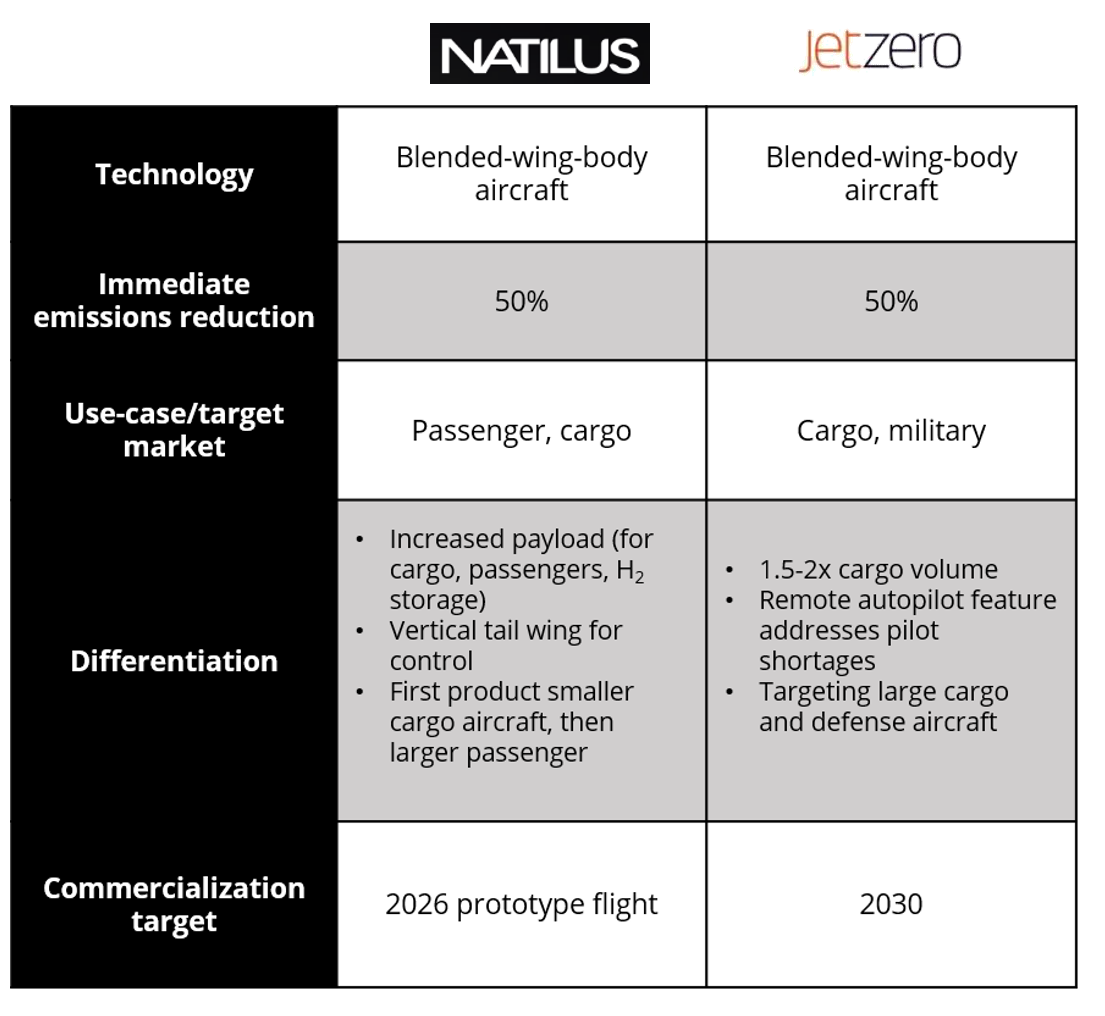Aviation emissions have doubled since 1990 (barring a sharp drop in emissions during the COVID pandemic) due to increased demand for both passenger and cargo air transportation. While demand and emissions have increased, so has efficiency. Aircraft efficiency has improved steadily over the past five decades—modern commercial jets are over 40% more fuel efficient than in 1960 (compound annual efficiency improvement of about 1.3%). Estimates suggest that the latest generation of commercial jets are up to 20% more efficient than previous generation counterparts.
Average Fuel Burn of New Commercial Jet Aircraft, 1960-2019

(Source, ICCT)
Increasing stringency of standards for aircraft emissions have played a part in this evolution of aircraft fuel efficiency, but the main driver to reduce fuel consumption has been economic. Fuel can make up about 25% of operating expenses for airlines and fleet operators. As aircrafts have long operational lifetimes, operating costs make up the vast majority of total cost of ownership (compared to upfront cost of purchase).
Notably, a new International Civil Aviation Organization (ICAO) CO2 standard will come into effect within the year. All aircrafts entering service must meet the CO2 threshold in order to operate internationally and beginning in 2028 the standard will be applied to all newly delivered commercial aircrafts.
Next-gen Aircraft Design: Blended-wing-body Aircrafts
In the larger context of CORSIA, incoming carbon offsetting requirements, and impending SAF minimum uptake requirements, airlines and operators are facing immediate pressure to both reduce emissions and cut costs to offset costly decarbonization measures. Innovators in the aircraft design and software space are developing solutions to reduce fuel consumption, operational costs, and emissions while unlocking new economic opportunities for demand owners.
Novel aircraft designs promise significant improvements in efficiency and fuel consumption, dramatically altering the trend of slow and steady aircraft efficiency improvement over the past decades. Innovators such as Natilus and JetZero estimate 50% fuel efficiency improvements compared to current commercial aircrafts.
Blended-Wing-Body Aircraft Design

Source: Natilus, JetZero
The blended-wing-body (BWB) aircraft eliminates the division between main aircraft body and wings, enabling the entire aircraft to generate lift and reduce aerodynamic drag. Improved aerodynamics directly improves fuel efficiency and payload. While BWBs can be fuelled with conventional jet fuel, the increased efficiency provides significant flexibility and improves the cost-efficiency of zero- and low-emissions propulsion technologies.
The BWB design, for example, increases battery-electric aircraft range and payload, two key obstacles for scaling of electric aircrafts. For hydrogen propulsion systems, the increased payload capacity of BWB designs could provide a solution to the high payload requirement of hydrogen tanks and on-board storage.
BWB innovators are designing aircrafts that are compatible with existing infrastructure as well as a range of decarbonization solutions, from electric and hydrogen propulsion to SAF. There are several key demand markets for BWB—innovators such as JetZero are focusing on unmanned vehicles, defense, and cargo, while Natilus is engaging both the cargo and passenger markets.
Blended-Wing-Body Innovators

Fuel-efficiency Software
On the software side, innovators are providing airlines and operators with software tools to optimize routes and fleet logistics to reduce fuel use. Innovators such as Open Airlines, i6 Group, and StorkJet leverage AI and machine learning to analyze flight data and optimize each stage of the flight cycle.
Both these innovators report fuel savings of 3-5% and offer a range of services and platforms. Innovators are layering additional services and products into their platforms, such as Open Airlines´ Emissions tool to track compliance with CORSIA and ETS regulations or i6 Group´s fuel overarching fuel consumption and supply chain visibility tool.
Keep an Eye Out For…
- Fuel efficiency software and AI is already being used by dozens of airlines and operators around the world. Demand for these solutions will continue to grow as CORSIA and ETS come into play, particularly platforms that can certify compliance.
- BWB aircrafts are nearing commercialization; successful flight demonstration of prototypes is a key step for innovators to secure later-stage funding and pre-orders.
- Airlines are actively looking to engage and adopt sustainable aircrafts that do not require additional infrastructure build-out and do not face additional technological or logistical barriers (as is the case for electric and hydrogen aircrafts). Initial uptake of BWB aircrafts is likely to be for cargo and smaller passenger aircraft with eventual scale-up to larger aircrafts and longer flights.


